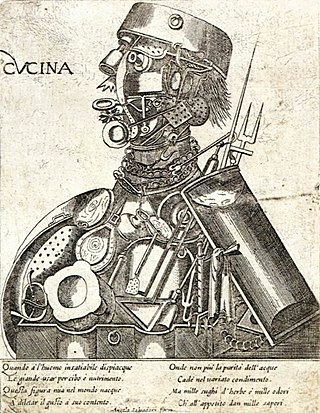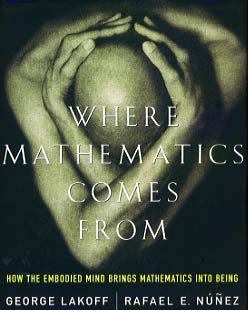
A concept is defined as an abstract idea. It is understood to be a fundamental building block underlying principles, thoughts and beliefs. Concepts play an important role in all aspects of cognition. As such, concepts are studied within such disciplines as linguistics, psychology, and philosophy, and these disciplines are interested in the logical and psychological structure of concepts, and how they are put together to form thoughts and sentences. The study of concepts has served as an important flagship of an emerging interdisciplinary approach, cognitive science.

Cyberspace is an interconnected digital environment. It is a type of virtual world popularized with the rise of the Internet. The term entered popular culture from science fiction and the arts but is now used by technology strategists, security professionals, governments, military and industry leaders and entrepreneurs to describe the domain of the global technology environment, commonly defined as standing for the global network of interdependent information technology infrastructures, telecommunications networks and computer processing systems. Others consider cyberspace to be just a notional environment in which communication over computer networks occurs. The word became popular in the 1990s when the use of the Internet, networking, and digital communication were all growing dramatically; the term cyberspace was able to represent the many new ideas and phenomena that were emerging. As a social experience, individuals can interact, exchange ideas, share information, provide social support, conduct business, direct actions, create artistic media, play games, engage in political discussion, and so on, using this global network. Cyberspace users are sometimes referred to as cybernauts.

A metaphor is a figure of speech that, for rhetorical effect, directly refers to one thing by mentioning another. It may provide clarity or identify hidden similarities between two different ideas.

Where Mathematics Comes From: How the Embodied Mind Brings Mathematics into Being is a book by George Lakoff, a cognitive linguist, and Rafael E. Núñez, a psychologist. Published in 2000, WMCF seeks to found a cognitive science of mathematics, a theory of embodied mathematics based on conceptual metaphor.

George Philip Lakoff is an American cognitive linguist and philosopher, best known for his thesis that people's lives are significantly influenced by the conceptual metaphors they use to explain complex phenomena.
In cognitive linguistics, conceptual metaphor, or cognitive metaphor, refers to the understanding of one idea, or conceptual domain, in terms of another. An example of this is the understanding of quantity in terms of directionality or the understanding of time in terms of money.
Cognitive linguistics is an interdisciplinary branch of linguistics, combining knowledge and research from cognitive science, cognitive psychology, neuropsychology and linguistics. Models and theoretical accounts of cognitive linguistics are considered as psychologically real, and research in cognitive linguistics aims to help understand cognition in general and is seen as a road into the human mind.

Metonymy is a figure of speech in which a concept is referred to by the name of something closely associated with that thing or concept.

Analogy is a comparison or correspondence between two things because of a third element that they are considered to share.
A desktop traditionally refers to:

An image schema is a recurring structure within our cognitive processes which establishes patterns of understanding and reasoning. As an understudy to embodied cognition, image schemas are formed from our bodily interactions, from linguistic experience, and from historical context. The term is introduced in Mark Johnson's book The Body in the Mind; in case study 2 of George Lakoff's Women, Fire and Dangerous Things: and further explained by Todd Oakley in The Oxford handbook of cognitive linguistics; by Rudolf Arnheim in Visual Thinking; by the collection From Perception to Meaning: Image Schemas in Cognitive Linguistics edited by Beate Hampe and Joseph E. Grady.
In linguistics, a semantic field is a lexical set of words grouped semantically that refers to a specific subject. The term is also used in anthropology, computational semiotics, and technical exegesis.
The engineering design process, also known as the engineering method, is a common series of steps that engineers use in creating functional products and processes. The process is highly iterative – parts of the process often need to be repeated many times before another can be entered – though the part(s) that get iterated and the number of such cycles in any given project may vary.

Metaphors We Live By is a book by George Lakoff and Mark Johnson published in 1980. The book suggests metaphor is a tool that enables people to use what they know about their direct physical and social experiences to understand more abstract things like work, time, mental activity and feelings.

Computational creativity is a multidisciplinary endeavour that is located at the intersection of the fields of artificial intelligence, cognitive psychology, philosophy, and the arts.
Pop music automation is a field of study among musicians and computer scientists with a goal of producing successful pop music algorithmically. It is often based on the premise that pop music is especially formulaic, unchanging, and easy to compose. The idea of automating pop music composition is related to many ideas in algorithmic music, Artificial Intelligence (AI) and computational creativity.
In linguistics, the conduit metaphor is a dominant class of figurative expressions used when discussing communication itself (metalanguage). It operates whenever people speak or write as if they "insert" their mental contents into "containers" whose contents are then "extracted" by listeners and readers. Thus, language is viewed as a "conduit" conveying mental content between people.
Macmillan English Dictionary for Advanced Learners, also known as MEDAL, is an advanced learner's dictionary first published in 2002 by Macmillan Education. It shares most of the features of this type of dictionary: it provides definitions in simple language, using a controlled defining vocabulary; most words have example sentences to illustrate how they are typically used; and information is given about how words combine grammatically or in collocations. MEDAL also introduced a number of innovations. These include:
Idea networking is a qualitative method of doing a cluster analysis of any collection of statements, developed by Mike Metcalfe at the University of South Australia. Networking lists of statements acts to reduce them into a handful of clusters or categories. The statements might be source from interviews, text, websites, focus groups, SWOT analysis or community consultation. Idea networking is inductive as it does not assume any prior classification system to cluster the statements. Rather keywords or issues in the statements are individually linked (paired). These links can then be entered into network software to be displayed as a network with clusters. When named, these clusters provide emergent categories, meta themes, frames or concepts which represent, structure or sense-make the collection of statements.









